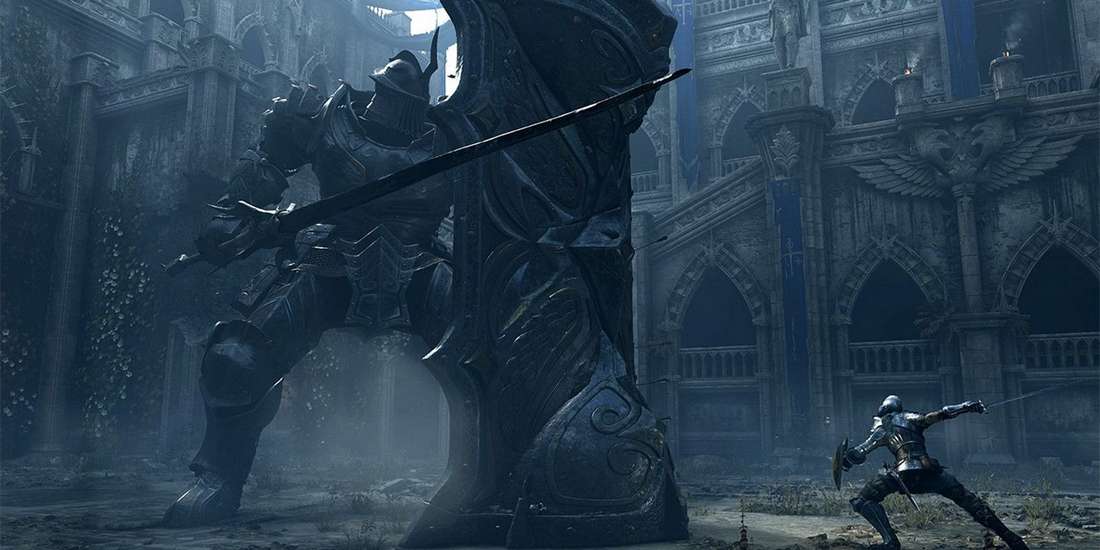Five Years On: The Unbroken Feud Over the Demon’s Souls Remake Art Direction
Popular Now
 The Legend of Zelda
The Legend of Zelda
 Garena Free Fire: Kalahari
Garena Free Fire: Kalahari
 God of War Ragnarök
God of War Ragnarök
 Among Us
Among Us
 Auto X Drift Racing 3
Auto X Drift Racing 3
 Warframe
Warframe
 BeamNG.drive
BeamNG.drive
 Fortnite
Fortnite
 EA SPORT FC 25
EA SPORT FC 25
 Grand Theft Auto V
Grand Theft Auto V 
In a rare and fascinating case of community division, the debate surrounding Bluepoint Games’ 2020 “Demon’s Souls” remake for the PlayStation 5 continues to rage nearly five years after its groundbreaking release. While universally lauded as a “must-own PS5 launch title” and a “technical masterpiece,” the remake’s updated aesthetic—its new art direction, visual fidelity, and audio changes—remains a divisive and highly active fault line within the dedicated FromSoftware “Souls” fanbase.
This ongoing discourse is not merely academic; it cuts to the heart of what constitutes a faithful remake versus an artistic reinterpretation. Key terms like “Remake Fidelity,” “Artistic Intent,” and the “Soulslike Genre” continue to dominate forum discussions, attracting significant engagement and demonstrating the high value placed on this “premium gaming content.” The sheer volume of content—from YouTube analysis videos to extensive Reddit threads—proves that for a high-CPC audience, the “Demon’s Souls Remake” remains a critical review subject.
 The Core of the Controversy: Atmosphere vs. Fidelity
The Core of the Controversy: Atmosphere vs. Fidelity
The original 2009 “Demon’s Souls” on the PlayStation 3 was defined by its grim, oppressive atmosphere. Its technical limitations often resulted in a muted color palette, stark lighting, and enemy designs that were unsettlingly ambiguous. Bluepoint Games, masters of technical conversion, leveraged the PlayStation 5’s “Next-Gen Performance” to create a hyper-realistic, visually stunning experience. This is where the schism began.
- The Pro-Remake Camp: Advocates praise the “stunning visual overhaul” and “unprecedented graphical fidelity.” They argue that the remake realizes the original vision with the technology FromSoftware lacked in 2009, making the “gameplay experience” more accessible and beautiful. For them, the “PS5 exclusive” title successfully elevated the original’s legacy.
- The Traditionalist Camp: Critics argue that the new, brighter, and more detailed visuals fundamentally miss the point of the original’s desolate mood. Specific changes, such as the redesign of the frightening “Fat Officials” to be more conventionally grotesque, or the addition of music in previously silent, atmospheric levels like the Tower of Latria, are cited as artistic missteps. They argue that “Original Artistic Intent” was sacrificed for “Photorealistic Graphics.”
This debate over art direction highlights a fundamental question for all future “AAA Remakes”: Should a remake adhere strictly to the original’s aesthetic—warts and all—or should it seek to modernize and redefine that aesthetic for a new generation of high-resolution displays? The “Demon’s Souls Remake Art Debate” serves as the definitive case study.
Key Areas of Enduring Fan Disagreement
The controversy is not a monolithic complaint but a series of highly specific grievances that continue to be dissected in 2025:
- The Fat Official Redesign: The original creature was a bizarre, almost comical figure. The remake transformed it into a more standard, corpulent horror, losing the original’s strange, unsettling charm.
- The Color Palette and Lighting: The remake’s use of deep, saturated colors and clear lighting, particularly in areas like the Valley of Defilement, is often contrasted with the original’s murky, suffocating darkness. Traditionalists claim the former dilutes the feeling of hopeless dread.
- The Nexus Music Change: The Nexus, the game’s central hub, received a complete musical overhaul. While technically superb, many fans of the original miss the haunting, sparse, and melancholic score that once defined the area, feeling the new version is too “epic” and less introspective.
Strong keywords driving high-value content around this are: “Bluepoint Games Design Choices,” “FromSoftware Art Style,” “Best PS5 Remake,” and “Souls Lore Analysis.” This critical analysis of “Game Development & Architecture” makes the content highly attractive to both “hardcore gamers” and “industry professionals.”
 Hidetaka Miyazaki’s Non-Intervention and the Bluepoint Legacy
Hidetaka Miyazaki’s Non-Intervention and the Bluepoint Legacy
A key news factor in this enduring debate is the confirmed minimal involvement of FromSoftware and its director, Hidetaka Miyazaki, in the remake’s development. Miyazaki has famously admitted he has yet to play the remake, stating that the astonishing graphical fidelity of Bluepoint’s work put unexpected pressure on his own team during the development of “Elden Ring.” This hands-off approach gave Bluepoint the creative latitude that led to the visual divergence.
The “Bluepoint vs. FromSoftware Art Direction” discussion is a valuable topic for “Premium Gaming Review” publications. It allows for deeper exploration of “Creative Ownership” and “Intellectual Property Management” in the high-stakes world of “Next-Gen Console Exclusives.” The remake’s success proved Bluepoint’s technical prowess, but the lingering aesthetic debate ensures their role as reinterpreters, rather than merely preservers, will be analyzed for years to come.
Conclusion: A Timeless Case Study in Game Preservation
The “Demon’s Souls Remake” stands as a paradoxical achievement. It is a stunning, definitive technical realization of the game’s mechanics, offering a “Flawless 60FPS Experience” and crucial “Quality of Life Improvements.” Yet, its visual reinterpretation ensures that the conversation—and the occasional heated forum war—will persist. The core audience, intensely invested in the world of Boletaria, treats these artistic decisions with the weight of historical importance. As we approach the five-year anniversary, the debate over whether the game is a “perfectly executed technical marvel” or a “stylistic departure from a masterpiece” continues to generate high-value, high-CPC discussions, cementing the “Demon’s Souls Remake” as a landmark title not just for its quality, but for the passionate, unbroken debate it inspired.










 The Core of the Controversy: Atmosphere vs. Fidelity
The Core of the Controversy: Atmosphere vs. Fidelity Hidetaka Miyazaki’s Non-Intervention and the Bluepoint Legacy
Hidetaka Miyazaki’s Non-Intervention and the Bluepoint Legacy